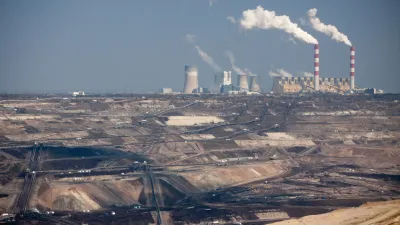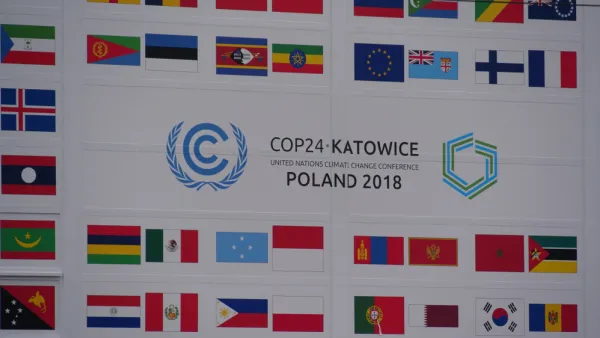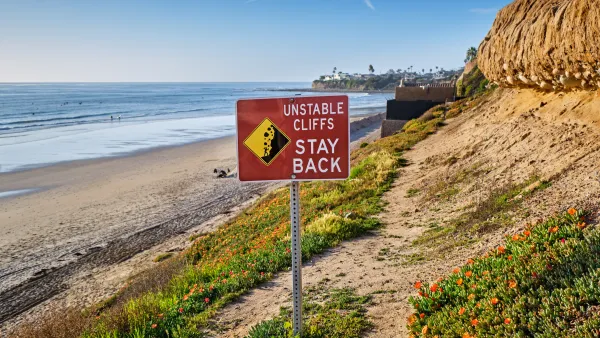The second volume of the Fourth National Climate Assessment, released on Black Friday to presumably draw less attention from the American public, was well-covered by the media. Unlike Volume 1, there was greater focus on economic impacts.

When President Trump was asked last month by 60 Minutes reporter Lesley Stahl, "What about the scientists who say [climate change] is worse than ever?" the president replied, "You'd have to show me the scientists because they have a very big political agenda."
With the release of Volume II of the Fourth National Climate Assessment on Nov. 23 by the Trump administration, the president need only look within the 13 agencies of the federal government to find them. For example, click on "+ Authors" in Chapter I: Overview to find 11 of the more than 300 experts who contributed to this landmark report.
The assessment "presents the starkest warnings to date of the consequences of climate change for the United States, predicting that if significant steps are not taken to rein in global warming, the damage will knock as much as 10 percent off the size of the American economy by century’s end," report Coral Davenport and Kendra Pierre-Louis for The New York Times. The administrative lead agency was the National Oceanic and Atmospheric Administration.
The U.S. Global Change Research Program, mandated by the Global Change Research Act (GCRA) of 1990, signed into law by President George H.W. Bush, is required to produce a comprehensive assessment of climate science and the potential effects of climate change on the nation. The Third Assessment was released by the Obama administration in May 2014.
Volume I, aka the Climate Science Special Report of the Fourth National Climate Assessment, was released on November 3, 2017 and made clear that climate change is real and what's causing it:
The global, long-term warming trend is “unambiguous,” and there is “no convincing alternative explanation” that anything other than humans — the cars we drive, the power plants we operate, the forests we destroy — are to blame.
Volume II "focuses on the human welfare, societal, and environmental elements of climate change" and examines the impact on 10 regions in the greater U.S. and established 12 "Summary Findings" including economy.
"The report puts the most precise price tags to date on the cost to the United States economy of projected climate impacts: $141 billion from heat-related deaths, $118 billion from sea level rise and $32 billion from infrastructure damage by the end of the century, among others," write Davenport and Pierre-Louis.
In a separate Times article, Brad Plumer and Henry Fountain write a summary of what’s new in the report, which includes a section on adaptation.
The report warns that the country is particularly unprepared for the upheavals that will come as rising sea levels swamp coastal cities: “The potential need for millions of people and billions of dollars of coastal infrastructure to be relocated in the future creates challenging legal, financial, and equity issues that have not yet been addressed.”
Trump's response
Davenport reports on Nov. 25 in a follow-up, "Trump Administration’s Strategy on Climate: Try to Bury Its Own Scientific Report," that the White House is downplaying the assessment by claiming it was “largely based on the most extreme scenario” of global warming. She goes to explain what led to the release of the report which clearly contradicts the president's expressed beliefs, or lack thereof, on climate change.
Related in Planetizen: "Click on tag: "National Climate Assessment."
FULL STORY: U.S. Climate Report Warns of Damaged Environment and Shrinking Economy

Analysis: Cybertruck Fatality Rate Far Exceeds That of Ford Pinto
The Tesla Cybertruck was recalled seven times last year.

National Parks Layoffs Will Cause Communities to Lose Billions
Thousands of essential park workers were laid off this week, just before the busy spring break season.

Retro-silient?: America’s First “Eco-burb,” The Woodlands Turns 50
A master-planned community north of Houston offers lessons on green infrastructure and resilient design, but falls short of its founder’s lofty affordability and walkability goals.

Test News Post 1
This is a summary

Analysis: Cybertruck Fatality Rate Far Exceeds That of Ford Pinto
The Tesla Cybertruck was recalled seven times last year.

Test News Headline 46
Test for the image on the front page.
Urban Design for Planners 1: Software Tools
This six-course series explores essential urban design concepts using open source software and equips planners with the tools they need to participate fully in the urban design process.
Planning for Universal Design
Learn the tools for implementing Universal Design in planning regulations.
EMC Planning Group, Inc.
Planetizen
Planetizen
Mpact (formerly Rail~Volution)
Great Falls Development Authority, Inc.
HUDs Office of Policy Development and Research
NYU Wagner Graduate School of Public Service




























